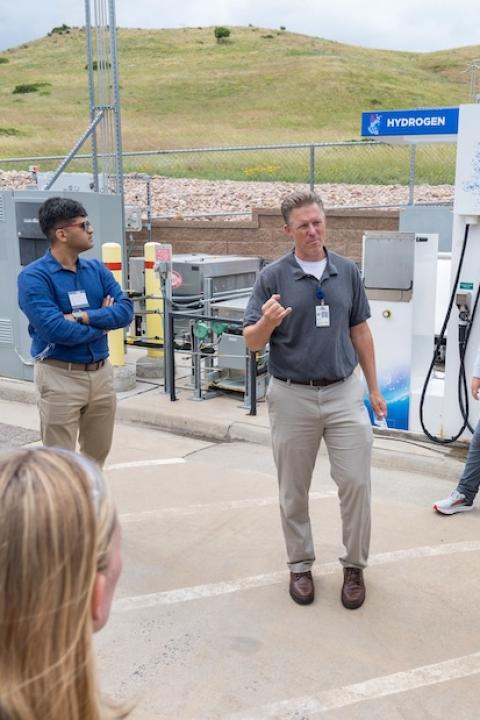
Water UK, the trade association representing major British water companies, has released a plan for achieving in net-zero carbon emissions in the water sector by 2030, 20 years before the government’s economy-wide net-zero emissions goal.
A data-driven approach toward water stewardship
The Net Zero 2030 Routemap used a decade’s worth of data and technical expertise to develop several pathways to help the water sector achieve net-zero emissions through technology, regulatory, and supply chain collaboration and initiatives. The solutions include increased efficiency and use of alternative technologies, especially through biogas, renewable energy generation, restoring peatland and grassland, planting trees, and transitioning to electric and alternative fuel vehicles.
If the goals cannot be fully met through those measures, carbon offsets will make up the balance of any residual offsets. The Routemap acts as just that, allowing some flexibility for water companies to determine their firm-specific action plans.
A step forward for climate action
The Routemap represents the first effort by an industrial sector anywhere in the world to deliver a detailed plan to achieve net-zero carbon of operational emissions by 2030. That is comes from a water sector group is more remarkable. Water companies are in a unique position because they supply an essential public good that relies on massive infrastructure. It is also the sector that is already one of the most affected by climate change, both because of its inputs and demand.
Further, the primary source of emissions from the water sector is from energy use and it is also costly for water utilities. Energy consumption by municipally-owned water utilities can represent 30 to 40 percent of a city’s electricity bill. That matters in particular where electricity is generated using fossil fuels.
Convincing water companies to address leakage
The high demand for energy worldwide is due to treating and moving water. For most utilities, dealing with decaying infrastructure, leakage is a significant problem. Water that is lost through leakage - also known as non-revenue water (NRW) - is literally money down the drain. While average expected leakage rates should be around 10 percent, in some places they can be over 60 percent. And as infrastructure continues to break down, that rate has increased by 27 percent since 2012.
Despite some improvements in recent years in leakage rates in the United Kingdom, some parts of the country could run out of water in twenty years due to uncontrolled leakage. The Routemap sets a goal to triple the rate of leakage reduction by 2030, setting a clear target for getting NRW under control.
While the Routemap notes that there is uncertainty in how to reduce leakage rates significantly, it could take a page from another notebook. Israel has managed to get its national leakage rates down to about 7 percent, with some utilities getting their rates down as low as 2 percent. Israel’s infrastructure is relatively new and it does have to deal with large fluctuations in weather conditions. Nevertheless, the U.K. and other countries could look at Israel’s use of technology and innovation as a way to address leakage. Israel has about 300 water technology companies looking at how to innovate the sector—from satellite-based detection to smart meters that can detect a leak before it happens.
A model for not only conserving water, but driving new technologies
The next step for the Routemap is figuring out a practical, step-based approach, which will get fully underway in early 2021. Giving utilities the flexibility to determine how to meet the goals makes success more likely as they can fit initiatives into each company’s budget and operations plans. It also gives individual water companies ownership over the solutions, determining what is the right mix of technologies and policies for its particular service area.
But an important component of this is a national goal. As Israel as made water a top national priority at the government level, the Routemap is to help water companies achieve the economy-wide emissions reductions goal set by the national government. The water sector has to be part of the climate solution. A national policy in the U.S. could potentially not only kickstart technological innovation, but also bring private and public investment dollars into the sector akin to what the American Recovery and Reinvestment Act of 2009 did for the clean energy sector.
Climate discussions necessarily focus on the energy, industry, and transportation sectors - the three largest emission sources - but the water sector is also part of both of those as well as every other facet of modern life. If countries, the U.S. included, are smart, they’ll ride the wave of engaging the water sector in solutions to the greatest policy and economic issue of our times.
Image credit: Wolfgang Hasselmann/Unsplash

Kate is a writer and policy wonk, with a focus on water, clean energy, climate change and environmental security. She spent over a decade running energy-water nexus and energy efficiency programs at Environmental Defense Fund as well as time at the U.S. Departments of Energy and Defense, U.S. Government Accountability Office, and state and federal legislatures. She serves as an Advisory Board member of CleanTX, which aims to accelerate the growth of the clean tech industry in Texas.














